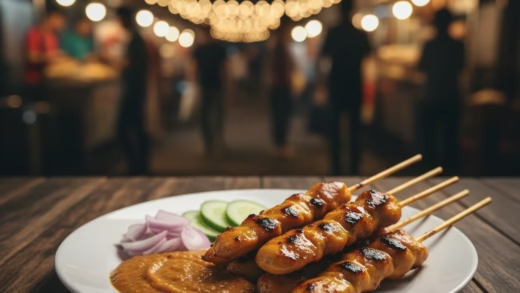Rambutan

Introduction
Rambutan (Nephelium lappaceum), popularly known as the “Hairy Fruit,” is a tropical delicacy and cultural emblem of Malaysia and Southeast Asia. Its vibrant red, spiky exterior and juicy, sweet flesh have made it a staple in local markets, festive gatherings, and modern culinary creations. Beyond its sensory appeal, rambutan plays a vital role in Malaysia’s agricultural economy, contributing to export markets and promoting tropical fruit culture worldwide. This article explores the heritage, cultivation, culinary uses, and market potential of rambutan, positioning it as both a cultural and commercial icon.
Origin
Rambutan originates from the Malay-Indonesian region and thrives in tropical rainforest climates. Belonging to the Sapindaceae family, it shares botanical lineage with lychee and longan. Over centuries, rambutan cultivation spread to Thailand, the Philippines, and other tropical regions, becoming a high-value agricultural commodity. Its adaptability to tropical climates and high yield makes it significant for both local consumption and international export.
Category
| Attribute | Description |
|---|---|
| Scientific Name | Nephelium lappaceum |
| Family | Sapindaceae |
| Category | Tropical Fruit |
| Type (Seasonality) | Seasonal (June–September) |
Appearance
Rambutan is renowned for its bright red, hairy rind, occasionally tinged with yellow or orange. Measuring 3–6 cm in diameter, it contains translucent, juicy flesh with a single glossy seed. Its unique appearance makes it visually appealing in markets and culinary presentations.
Popular Varieties
| Variety | Local Name | Distinctive Features | Region of Prominence |
|---|---|---|---|
| R-156 | Merah | Large, sweet red flesh | Selangor, Malaysia |
| R-134 | Madu | Extra sweet, golden-tinged flesh | Johor, Malaysia |
| R-162 | Manis | Small seeds, very juicy | Sabah, Malaysia |
| R-167 | Nona | Medium-sized, slightly tangy | Sarawak, Malaysia |
Preparation
Rambutan is versatile and enjoyed in multiple ways:
- Fresh: Raw, chilled, or at room temperature
- Snacks: Dried, candied, or part of tropical mixes
- Desserts: Puddings, ice creams, fruit salads
- Traditional Cuisine: Local pastries, sweet soups, compotes
- Beverages: Juices, smoothies, tropical cocktails
Equipment
Essential tools include:
- Paring knife for peeling
- Cutting board
- Fruit bowl or container
- Strainer for juice or dessert preparation
Taste
Rambutan delivers a complex, sweet profile with mild acidity, honeyed undertones, and floral notes, offering a refreshing tropical flavor experience.
Texture
The flesh is firm, tender, and juicy with a slightly fibrous consistency, providing a satisfying bite while enclosing the glossy seed.
Aroma
Rambutan emits a delicate, sweet tropical fragrance reminiscent of lychee, moderate in intensity but inviting upon peeling.
Cultural Significance
In Malaysia and Southeast Asia, rambutan symbolizes seasonal abundance, prosperity, and community. It features in harvest festivals, family feasts, and social gatherings, bridging traditional cuisine with modern culinary innovation.
Regional Cultivation
| State/Region | Famous For | Harvest Period |
|---|---|---|
| Selangor | Large red-flesh varieties | June–August |
| Johor | Sweet golden-flesh varieties | June–September |
| Sabah | Juicy small-seed varieties | July–September |
| Sarawak | Tangy regional varieties | June–September |
Social Context
Rambutan is commonly enjoyed at local markets, roadside stalls, and seasonal fairs. Its availability during harvest season makes it a social fruit, fostering communal appreciation and cultural engagement.
Nutritional Information (per 100g)
| Nutrient | Amount |
|---|---|
| Calories | 68 kcal |
| Carbs | 16.5 g |
| Protein | 0.9 g |
| Fat | 0.2 g |
| Fiber | 0.9 g |
| Vitamins | Vitamin C (20 mg), Vitamin B3 (0.4 mg) |
| Minerals | Iron (0.35 mg), Calcium (22 mg), Potassium (42 mg) |
Health Benefits
- Boosts immunity (rich in Vitamin C)
- Supports digestion (high fiber content)
- Promotes energy metabolism (B vitamins)
- Low-fat, nutrient-dense tropical snack
- Contains antioxidants for cellular health
Dietary Restrictions
- Moderate consumption recommended for diabetic individuals due to natural sugars
- Mild acidity may affect sensitive digestive systems
Allergens
- Rare sensitivities to Sapindaceae fruits may cause itching or swelling
Cost
- Standard red-flesh: MYR 10–15/kg
- Premium golden-flesh: MYR 18–25/kg
Production & Export
Malaysia exports rambutan to Singapore, Brunei, the Middle East, and select European markets. Growing global demand for tropical and organic fruits drives production and export opportunities, boosting economic value for farmers and agribusinesses.
Symbolism
Rambutan embodies tropical abundance, heritage, and community. Its seasonal presence reflects unity and prosperity, while its distinctive appearance and premium quality convey authenticity, prestige, and a vibrant tropical identity.





Comments are closed.